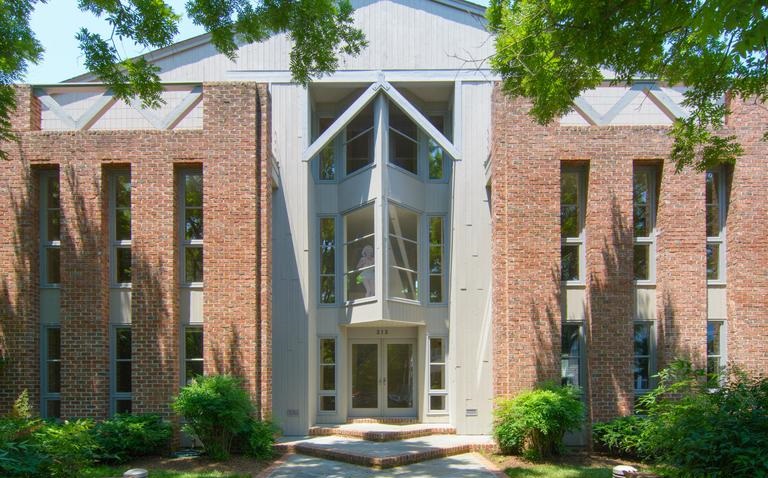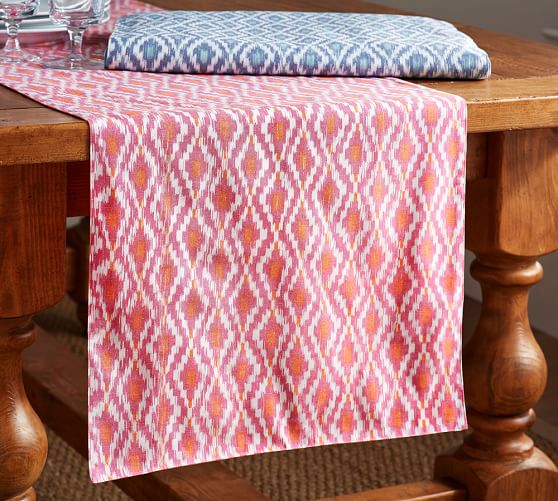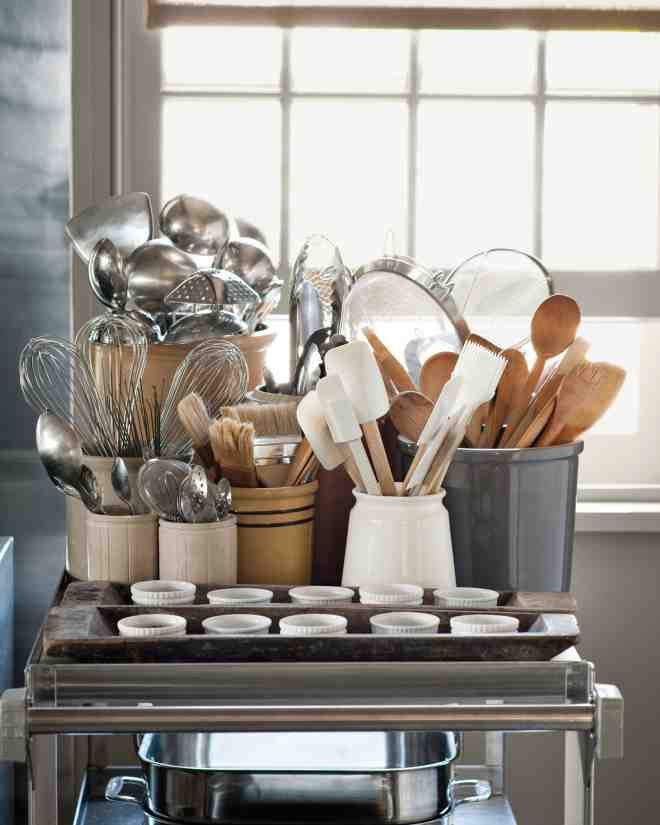#TBT to this wonderful home that we built in Eastport over 15 years ago. This home has been featured in several different magazines. Take a look below. You can click each image for a larger view!

A Better Building Experience Since 1977
#TBT to this wonderful home that we built in Eastport over 15 years ago. This home has been featured in several different magazines. Take a look below. You can click each image for a larger view!

Experts at the Pantone Color Institute are hinting at upcoming mellowing & calm trends with their choice for this years Color of The Year. Recently for the first time ever they anointed two colors; rose quartz and serenity were selected as the dual colors of the year for 2016 (they are shades of pale pink and baby blue). The pairing can appear solo or as blended shades.

In the words of Leatrice Eiseman, the Executive Director of the Pantone® Color Institute: “Joined together, Rose Quartz and Serenity demonstrate an inherent balance between a warmer embracing rose tone and the cooler tranquil blue, reflecting connection and wellness as well as a soothing sense of order and peace.” Rose Quartz is persuasive, gentle and conveys compassion and composure while Serenity compares to the blue sky and provides relaxation. Read on to see some simple ways you can incorporate these two tones into your home.

Add printed throw pillows throughout your home. Using a pattern that has both colors create a stunning display especially when placed against a neutral background.

One of the easiest ways you can stay on trend is to hang art on your wall. Art can be easily changed and if you think outside of the box it can be fairly inexpensive. Think old prints, posters, thrift store finds and tapestries. You could paint frames in these tones as well to subtly incorporate this new trend. This poster to the left uses both colors in a pretty design.

Table clothes can be easily incorporated into your home with little to no struggle. We love this printed patterned table runner from Pottery Barn.
Adorable accent pieces such as this chair are perfect for incorporating these colors. Think stands, dressers, and bookshelves. You can even upcycle things you already have or come across.
You can see how well the two colors compliment each other and blend in this awesome dresser. Blending the colors adds depth and personality as opposed to having just one flat color and takes full advantage of both of the tones.
Probably at the top of my list for most favorite uses of these colors is this wood paneled wall splashed with Rose Quartz. The wood panels give this hue a beachy and rustic vibe and creates something extremely unique. You could simply paint one wall to create an accent wall in your home with either of the colors. To prevent overkill and to break up the color adorn the wall with mirrors or photographs.
We also love this Rose painted door. A bolder move but it works so well!
Everyone knows what happens when Thanksgiving goes bad—and it can go really bad. really quickly. In fact, one of the busiest days of the year for plumbers is actually the day after thanksgiving. Horror stories of garbage disposal mishaps, sinks that are clogged, and dishwasher meltdowns haunt those homeowners affected by the pressure. With a little advance planning you can avoid most disasters this holiday and actually enjoy it surrounded by your friends and family.
Get your oven in check
Contrary to popular belief…it is not a good idea to run your oven’s self-clean cycle in the days before cooking. The cycle can be so stressful on the appliance that it could cause it to breakdown if you are doing heavy duty cooking in the days after running it. Instead use a damp cloth to wipe around the burners and and save the big clean u p for after the big day. In addition to this assure your temperature gauge is functioning properly. An easy way to test this is to pick up a cooking thermometer at the grocery store. Place the thermometer in the oven, set it to 300 degrees and wait for it warm up. If the gauge matches then you should be good to go.
p for after the big day. In addition to this assure your temperature gauge is functioning properly. An easy way to test this is to pick up a cooking thermometer at the grocery store. Place the thermometer in the oven, set it to 300 degrees and wait for it warm up. If the gauge matches then you should be good to go.
Clear Out Old Food
This step is often overlooked, but taking a few minutes to clear out your pantry, fridge, and freezer can save you a huge headache on the big day. These will soon become packed with ingredients, leftovers and of course, a giant turkey. Cleaning them out now will save you a lot of aggravation later.
Child-proof Your Kitchen
Hosting Thanksgiving may involve having family and friends of all age groups. If you are expecting small children or toddlers on Thanksgiving, and it’s been awhile since you’ve had a baby in the house, make sure you go through your home & look for things that could potentially be dangerous. Cover exposed outlets, place dangerous or breakable objects up high, and remove tripping hazards on the floor
Inventory Cookware
Keeping cookware organized can go a long way toward creating an efficient holiday meal. First, assure you have enough pots & pans to prepare all of the dishes on the menu. Do you have enough dishes, serving platters, and silverware? Use Post-it notes to label each dish with what will be served in it.
pots & pans to prepare all of the dishes on the menu. Do you have enough dishes, serving platters, and silverware? Use Post-it notes to label each dish with what will be served in it.
Sharpen Knives
You may not notice how much your knives have dulled until you are faced with slicing endless vegetables, meats, and other ingredients.
Rethink Your Seating Areas
Do a headcount ahead of time to be sure you’ve got room for everyone so you’re not left scratching your head and scrambling around. To improve flow and create room for more seats, experiment and move your sofa, chairs and side tables around. Do you have any extra tables and chairs that you could pull out to use? Before you start asking to borrow from friends and family or spend money on rentals, look around your house. Can a table in the office be re-purposed as a kids’ dining table? Cleared-out small bookcases can double as appetizer tables with a table cloth on top. Get creative!
Check Smoke Alarms
Did you know that the greatest number of cooking fires actually occur on Thanksgiving day? Holiday cooking and baking, along with candles and the distraction that parties create, can accidentally create unintentional fires. Before Thanksgiving, test your smoke alarms and make sure they are functioning in all areas. Have a small kitchen fire extinguisher in plain site as well as near the fireplace or any exposed flames.
Avoid Garbage Disposal Breakdowns
No matter how delicious your meal, you’ll inevitably end up with plenty of scraps. To make sure your disposer can keep up, grind hard materials, such as small bones, fruit pits, and ice before everything else. It helps scrape the inside of the disposer and pipes, removing any buildup. Avoid letting non-food items like tea bags, bread ties, and napkin rings fall into the sink where they can cause jams. Don’t put grease or fat down the disposer or any drain. Instead, pour grease into a glass jar or container, and then discard in the trash once it solidifies. Bonus Tip: to give your disposer a fresh scent, grind lemons and other citrus fruits.
Line Baking Dishes With Aluminum Foil
Our favorite clean-up tip: Put aluminum foil on the bottom and sides of baking pans before you start preparing food! When it’s time to eat, you can transfer the baked food into a serving dish and throw out the messy foil. You’ll dr astically cut down pan-scrubbing time.
astically cut down pan-scrubbing time.
Prepare for Overnight Guests
Do you have out of town family or friends coming to stay for the holidays? If so make sure your spare rooms & baths are ready before they arrive so your guest will feel welcome.
Make an Emergency Stain-Fighters Kit
When you mix large groups of people (and especially children) with food, spills are all but inevitable. Keep all your stain fighters in one place, close at hand to minimize the damage.
Some handy helpers may include:
Halloween is a fun holiday for children, but for parents it can be a little nerve racking. Concerns about children safety and the load of goodies they return home with can distract from the evenings festivities. But following a few safety tips can ensure that the children stay safe and Halloween remains a good time for all.
Proper attire: Ensure that costumes fit properly, reflect light and are fire resistant. The costume should complement the current weather conditions. Avoid cumbersome masks that can obstruct your child’s vision. Don’t carry fake swords, knives or guns that look authentic.
Pedestrian safety: Plan your route. Always trick or treat in groups with an adult. Take a flashlight. Stay on sidewalks, in lighted areas.Obey traffic signals, use crosswalks and do not jaywalk. Drive slowly all evening; be alert to creatures that may cross your path.
Familiar area: Visit familiar neighbors & avoid the unknown. Only visit well lit houses. Never enter a home of a stranger, or accept a ride from a stranger. If the area looks scary, stay away. Let your children know not to cut through alleys or fields. Stay in populated places.
Treat inspection: Children need to know not to eat treats until they get home. An adult must inspect all candy in a well-lit area. Discard any candy that has loose wrappings, is unwrapped or punctured. Avoid homemade treats
We wish you all a safe & happy Halloween!
With the change of each season comes a new set of maintenance tasks for your home. Now that summer’s here, you’ll want to prepare your home and yard for the onslaught of summer heat. From air-conditioner upkeep to simple grill maintenance, these simple chores will help keep your home happy and healthy. By keeping your home properly maintained, you can lessen the risk of damage and also safeguard the well being of your family.
Energy Efficiency is always a top priority as the temperature increases, to increase energy efficiency in your home try these tips:
Outside Maintenance:
Remember (as with every change of season) to check all smoke alarm batteries! 
We’ve had a number of clients request our counsel on phased construction projects that break up a larger master plan for remodeling or adding-on into smaller phases. The reason for doing this is usually either motivated by the need to allocate a budget across a longer time horizon or the desire to continue to live in the home while construction is executed. If the home is undergoing a complete remodel that is not phased, often the homeowner will need to live elsewhere until the project is completed. While phased construction offers more flexibility, the following advantages and disadvantages should be considered.
Phased construction benefits the homeowner in allowing them to break up the costs of building across each phase rather than paying all at once. On the other hand, the homeowner will pay a higher total cost over the long-term. Another benefit of phased construction is that homeowners have time on their side, in terms of modifying the interior design of the home, once the initial shell structures are built. This can be an advantage, as homeowners sometimes have a hard time visualizing how interior space will work until they are standing inside the actual building shell. However, if significant changes are made to the architectural plan that require already built structures to be torn out and rebuilt, costs may increase quickly.
THE PHASED CONSTRUCTION PROCESS:
Financing and Budgeting
Determine how much you can afford by speaking with your lender or financial advisor. Once you know what you can spend, you can ask the builder if what you have planned can be accomplished within your budget. You should also ask the builder to provide a cost comparison of building all at once versus phased construction. If you decide to move forward with phased construction, break out the costs over each building phase. This will allow you to work to a more specific budget for individual selections and finishes which will help you stay within the master budget.
Master Plan: The most important aspect of successful phased construction is in careful and deliberate planning. Working with a builder who has experience in phased construction is important criteria because it is a more complex scope of work than building all at once. The first step is to identify the project type, and create a list of needs, wants and desires to present to the builder so that they can design a master plan that meets your goals. Master architectural plans are then drawn up and discussed in detail prior to any work beginning.
Phasing Plan
Once the master plan is complete, the builder and homeowner can work together to designate how to break the project into individual phases. Attention should be paid to ensure the short-term need is on target with the long-term master plan. Permits will need to be planned according to the phased construction timeline. When phasing individual spaces, it is also advised to investigate the project in terms of the mechanical needs, material selections, and the finishes with regards to the master plan. Mechanical elements include all the large pieces of the master plan or “constants” that make up the mechanical (building envelope, HVAC), electrical, and plumbing. Ideally, if you can get the constants completed and the exterior shell “closed in” during phase 1, your home will look finished on the outside. This also gives a visual conception of the space thus allowing more time in making your selections for fixtures and interior finishes.
5 Tips for Successful Phased Construction
Work with the Pros: Work with a builder who has experience in phased construction design. They should have a clear and transparent plan that can help you navigate this complex process and deliver the quality final results you deserve.
Careful and Deliberate Planning: Phase 1 is the most important. Make thoughtful decisions to get as many of the details thought through before any building begins which will help identify the “constants” that costs the most to build, such as the initial building shell (floors and walls).
Ongoing Onsite Meetings: Make sure a weekly walk-through and meeting with the project manager and site supervisor is conducted during each phase so that any adjustments can be discussed. Don’t’ be afraid to get the clarity you need. Ask questions throughout the process, and continue to check that the short-term need is on target with the long-term master plan and budget.
Careful Budget Management: Understand how any changes will affect the bottom line of the master plan, the individual phase budget, and how they relate (in cost) to other phases of the build.
Setting Realistic Expectations: Consider the family dynamics ahead. How will decisions be made about the project, and identify the practical implications of daily living in a construction zone.
Making the decision to build your dream home is not one made lightly. Typically, this is a process that homeowners think about over a long period of time, sometimes over the course of one’s life and their experience living in a less than ideal home. It is also a profoundly personal experience. Unlike other professional relationships, this one hits not just close to home, but in your home! So when the time finally arrives to be able to build the home you want, choosing the right company to build it is of paramount importance. Below is a “recipe” for success in evaluating and selecting whether a custom home builder has what it takes to build the home of your dreams.
Reputation – As the adage goes, “reputation is everything.” No promotional or marketing efforts can replace good, old-fashioned word-of-mouth referrals. We come by the majority of our work from past customers, and many of our projects are in serving happy repeat clients. Our Capital Readers Choice 2014 “Best Local Builder” and Best of What’s Up? Eastern Shore Reader Poll for “Home Design/Builder & Remodeling Custom Services” awards mean a lot to us because they are awarded by the voting public.
Experience – Choose a company that is established and experienced. You want to know the company you hire has been around the block and is financially stable. Longevity is proof a company knows how to run a successful business and that they can be accountable to you for work warranties. You also want a custom builder that can show a portfolio of work that demonstrates their skill across a full scope of building techniques and architectural styles. This means you can be confident in their ability to meet your expectations and achieve your unique vision.
Credentials -Whether you want to build a custom home with the latest in green building technologies, or to build a home that considers your needs as you grow older, look for a builder who has the industry “gold star” certifications that qualify them as an expert in building the home you want to build. Another relevant “c” word is “custom”. If you want a truly custom home, you want a builder that specializes in creating unique, one-of-a-kind, “heirloom” homes, not a production home builder that builds assembly-line style homes. Our certifications include: Graduate Master Builder, Certified Graduate Remodeler, Certified Residential Construction Supervisor x 2, Certified Kitchen and Bath Remodeler, Certified Aging in Place Specialists. We are also EPA-Lead-Safe Certified Firm.
Integrity – We are passionate about a job done right. Part of integrity includes professional values and reliable project and time management. We strive to help our customers make smart and educated decisions they will be happy with for years to come, and we complete our work within a reasonable project time table. We take great pride in doing what we say we will do. See what our customers have to say about our work ethic.
Personable – As the building of a home does not happen overnight, our relationships with our customers are important. The building of a dream home is at heart a deeply collaborative effort between the homeowner and our entire team, from our architects to our laborers. We like to think of ourselves as personable people, and we know that is the foundation for good communication. We are genuinely interested in each of our customer’s lives. Not just hearing, but really listening to our customers is a critical component to making their dream home vision a reality. That’s why the beginning of the Lundberg building process involves a one-on-one consultation with our team to identify what’s important to you– your lifestyle, aesthetic preferences, wish list– so that we can give you professional guidance in making the best decisions to honor your goals.
Economical – The clients that choose Lundberg Builders do so because we deliver the best value for their investment. We are neither the cheapest nor the most expensive custom builder in the area, but we are the best at delivering exceptional quality and craftsmanship for a reasonable price. We are careful not to waste money or resources, and we do not cut corners.
Explore our portfolio of custom homes on Houzz or contact us to schedule a free consultation.



 We would like to Announce and extend our gratitude for being voted 2013′s Best of the Eastern Shore for Remodeling / Design / Custom Building for the third year in a row!!!
We would like to Announce and extend our gratitude for being voted 2013′s Best of the Eastern Shore for Remodeling / Design / Custom Building for the third year in a row!!!
Thanks to all who voted!

| DECK MATERIAL | COST* | LIFE-SPAN | MAINTENANCE |
| PRESSURE-TREATED LUMBER | $16-18 per sq. ft. | 10-15 years | High-maintenance: annual cleaning, sanding & sealing |
| CEDAR & REDWOOD | $20-25 per sq. ft. | 15-20 years | High-maintenance: annual cleaning, sanding & sealing |
| COMPOSITE | $28-30 per sq. ft. | 25 years | Low-maintenance: hose down as needed |
| IPE | $43-48 per sq. ft. | 30-50 years | Low-maintenance: can be oiled annually to keep the rich color (does not influence durability) |
* Costs may vary.